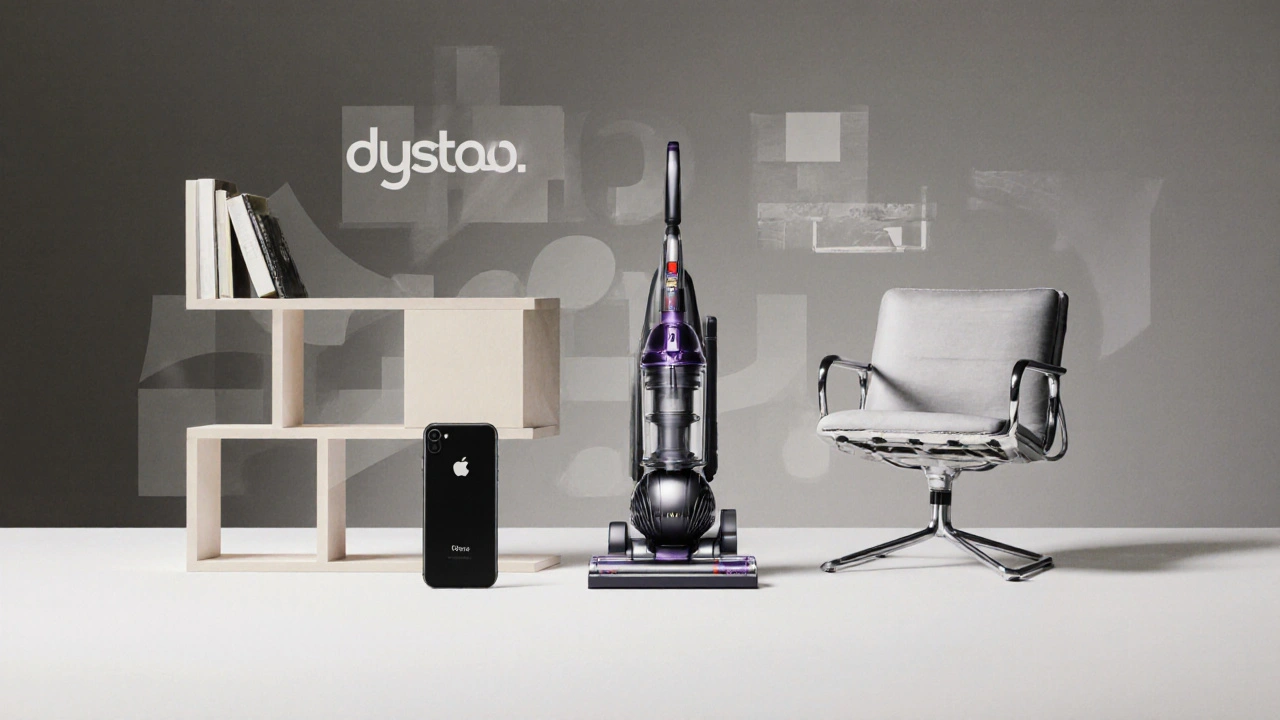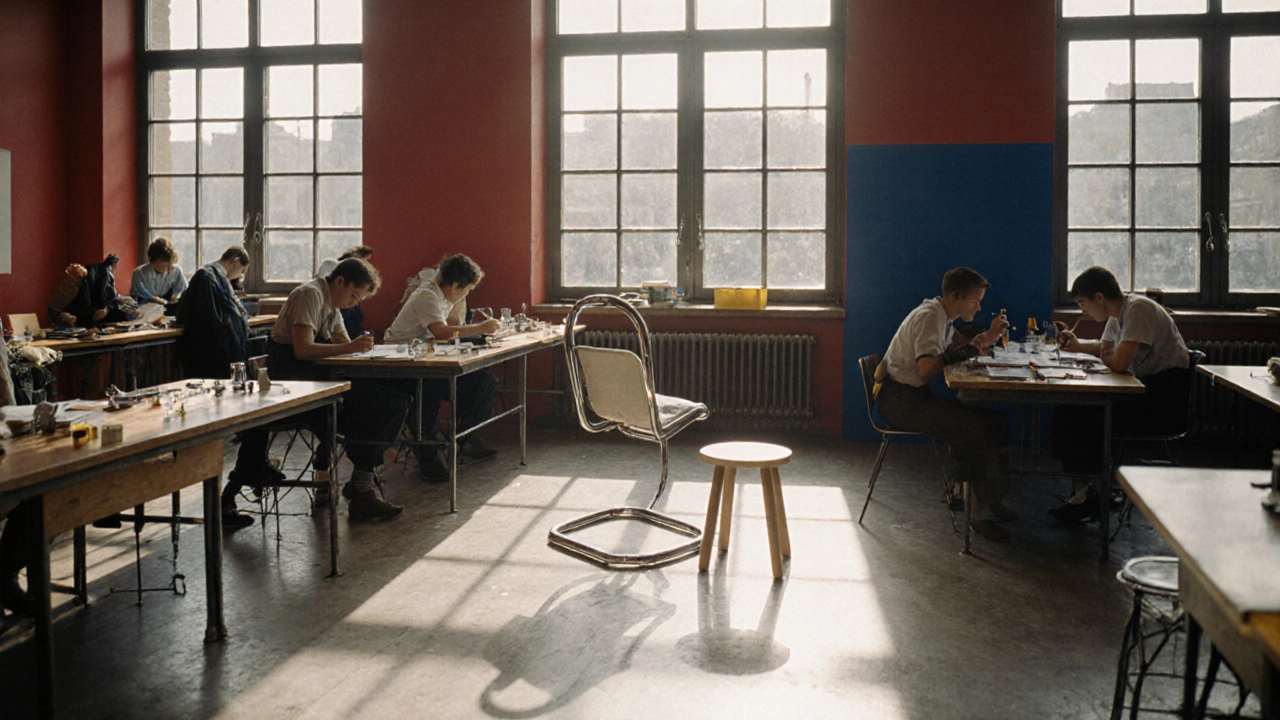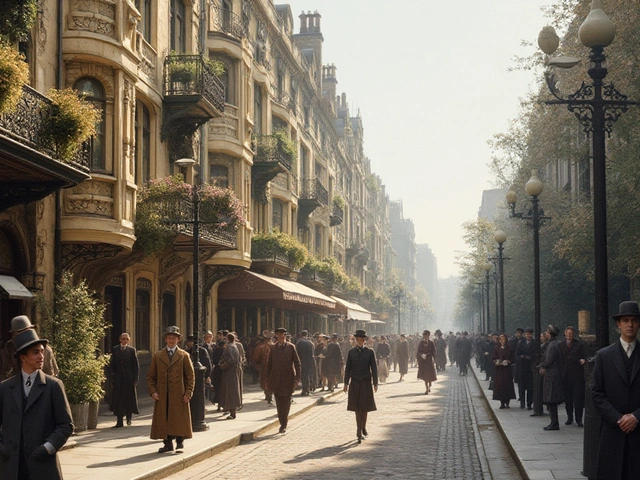Bauhaus Design Principles Checker
The Bauhaus revolutionized design by asking: What does this object actually do? This tool helps you evaluate if your design choices follow the core Bauhaus principles that still shape modern design today.
How Well Does Your Design Align With Bauhaus Principles?
Score: 0/7Before the Bauhaus, furniture looked like ornate sculptures. Buildings were covered in carvings, lamps had brass flowers, and chairs were heavy with velvet. Then, in 1919, a school opened in Weimar, Germany, that said: Bauhaus doesn’t need decoration. It needs function. And that simple idea changed everything.
What the Bauhaus Actually Was
The Bauhaus wasn’t just a style. It was a school. Founded by architect Walter Gropius, it brought together artists, craftsmen, and engineers under one roof. Their mission? To break down the fake wall between fine art and practical design. A painter wasn’t just painting canvases-they were designing chairs. A sculptor wasn’t just making statues-they were shaping door handles. The goal was to make beautiful, honest things for everyday people, not just the rich.
The school moved from Weimar to Dessau in 1925, then to Berlin in 1932. Each move changed its focus. In Dessau, the famous glass-and-steel building became a symbol of the movement. Its flat roof, steel frame, and lack of ornament didn’t just look different-they were cheaper to build and easier to maintain. This wasn’t about aesthetics alone. It was about efficiency, accessibility, and democracy in design.
The Big Ideas: Form Follows Function
The phrase "form follows function" didn’t come from a textbook. It came from the Bauhaus workshop floor. If a chair was meant to be sat on, why add carved legs that wobbled? If a teapot was meant to pour, why make the spout drip? Students learned to strip away anything that didn’t serve a purpose. A lamp didn’t need a porcelain rose. A table didn’t need inlaid wood patterns. Clean lines. Geometric shapes. No frills.
This wasn’t cold or soulless. It was thoughtful. The materials were chosen for how they worked-steel for strength, glass for light, plywood for flexibility. The colors? Primary red, blue, and yellow, plus black and white. Not because they were trendy, but because they were clear. They made objects easy to read, easy to use.
Marcel Breuer’s Wassily Chair is still sold today-not because it’s vintage, but because it’s perfect. The tubular steel frame holds your weight. The leather straps flex with your body. It weighs less than five kilos. It stacks. It lasts. And it cost a fraction of what a traditional armchair did in 1925. That’s the Bauhaus legacy: beauty that works.
The Teachers Who Changed Design Forever
Walter Gropius started it, but the real magic happened in the classrooms. Johannes Itten taught color theory through meditation and breathing exercises. He made students paint with their eyes closed. László Moholy-Nagy turned the camera into a design tool, showing how light and shadow could shape space. Josef Albers taught that a single color changes depending on what’s next to it-a lesson still taught in every design school today.
Paul Klee used grids and symbols to teach composition. Wassily Kandinsky explored how shapes made people feel. These weren’t just art teachers. They were psychologists of perception. They didn’t want students to copy old styles. They wanted them to see the world differently.
And then there was Mies van der Rohe. He took the Bauhaus idea to its extreme: "Less is more." His Barcelona Chair, designed for the 1929 International Exposition, is still the gold standard for modern seating. The steel frame curves like a whisper. The leather is taut and smooth. No nails. No screws visible. Just pure structure. It costs thousands today. But back then, it was revolutionary because it cost nothing extra to make.
How Bauhaus Built the Modern World
Look around your home. The flat-screen TV on the wall? That’s Bauhaus. The minimalist bookshelf? Bauhaus. The white kettle on your counter? Bauhaus. The Ikea bookcase with its flat-pack design? Bauhaus. Even your smartphone’s clean interface? That’s Bauhaus thinking-no buttons you don’t need, no icons that confuse.
Architects like Ludwig Hilberseimer and Hannes Meyer applied Bauhaus principles to housing. They designed apartment blocks with shared laundry rooms, rooftop gardens, and large windows to bring in light. These weren’t luxury projects. They were for factory workers. In Dessau, the Törten Estate housed over 300 families in simple, affordable homes with clean lines and no decoration. It worked. People lived better.
The movement didn’t just influence furniture and buildings. It changed how we think about cities. The idea that housing should be mass-produced, efficient, and beautiful? That came from Bauhaus. The belief that design should serve society, not just the elite? That’s still the heartbeat of public housing projects today.
Why the Nazis Hated It
By 1933, the Nazi regime called Bauhaus "degenerate art." Why? Because it didn’t glorify tradition. It didn’t celebrate nationalism. It didn’t use marble columns or eagle carvings. It used steel and glass. It was international. It was Jewish-led. It was for the working class. To the Nazis, that was dangerous.
The school was shut down. Teachers fled. Many went to the United States. Gropius went to Harvard. Mies van der Rohe ended up at the Illinois Institute of Technology. Albers taught at Black Mountain College. Moholy-Nagy founded the New Bauhaus in Chicago.
The Nazis thought they buried it. They didn’t. The ideas spread. American architects like Philip Johnson and Eero Saarinen brought Bauhaus principles to skyscrapers, universities, and homes. By the 1950s, the International Style-born from Bauhaus-dominated global architecture. Clean lines. Glass facades. Open floor plans. No ornament. Just structure.

Why Bauhaus Still Matters Today
Modern design isn’t just about looking sleek. It’s about solving problems. The climate crisis demands less waste. The cost of living demands affordability. The digital age demands simplicity. Bauhaus understood this before anyone else.
Today’s designers still ask: Can this be made simpler? Can it be made stronger? Can it be made for more people? The answers come straight from Dessau workshops in the 1920s.
Look at the Apple iPhone. No buttons. No logos on the back. Just glass and aluminum. That’s Bauhaus. Look at the Dyson vacuum. No ugly plastic casing. Just engineering made visible. That’s Bauhaus. Look at the modular shelving system that fits in your tiny apartment. That’s Bauhaus.
The movement didn’t die. It evolved. It’s in the way we design apps, cars, hospitals, and even public parks. It’s in the quiet confidence of a well-made object that doesn’t shout for attention.
Where to See Bauhaus Today
If you want to feel the real thing, go to the Bauhaus Archive in Berlin. Or visit the Dessau building-it’s still standing, still functioning as a school. The Weimar campus has been restored. The chairs, lamps, and tables are all original. You can sit in them. You can touch them. They haven’t aged because they were never meant to be decorative. They were meant to be used.
Even online, you can find digital versions of Bauhaus fonts like Futura and Helvetica. They’re everywhere-in newspapers, logos, websites. They’re clean. They’re readable. They don’t distract. That’s Bauhaus, still whispering in the background of your life.
What made Bauhaus different from other design movements?
Bauhaus didn’t just change how things looked-it changed why they were made. While other movements focused on decoration or historical revival, Bauhaus asked: What does this object actually do? Can it be made better? Can it be made for everyone? It merged art, craft, and industry into one system. No other movement did that so completely.
Is Bauhaus the same as modernism?
Bauhaus was one of the most influential drivers of modernism, but they’re not the same thing. Modernism is a broad cultural shift that happened across art, architecture, and literature in the early 20th century. Bauhaus was a specific school and movement that gave modernism its clearest design language. Think of Bauhaus as the engine that powered modernist design forward.
Why are Bauhaus designs still expensive today?
Original Bauhaus pieces from the 1920s and 30s are rare and collectible, so prices are high. But the designs themselves were meant to be affordable. Today, companies like IKEA, Muji, and Vitra produce affordable versions based on Bauhaus principles. You don’t need to pay $5,000 for a Wassily Chair-you can buy a well-made copy for under $300. The idea is still accessible.
Did Bauhaus only influence Europe?
No. After the Nazis shut the school, many key figures moved to the U.S. and taught at top universities. Gropius at Harvard, Mies at Illinois Tech, Albers at Black Mountain College. Their students became architects and designers across America. The International Style-dominant in American skyscrapers from the 1950s on-was built on Bauhaus ideas. So yes, it shaped the world.
Can I apply Bauhaus principles to my home without buying expensive furniture?
Absolutely. Start by removing clutter. Choose furniture with clean lines and neutral colors. Pick functional pieces-like a simple wooden table instead of a carved antique. Use lighting that serves a purpose, not just decoration. Buy one well-made item each year instead of five cheap ones. That’s Bauhaus: quality over quantity, usefulness over showiness.




